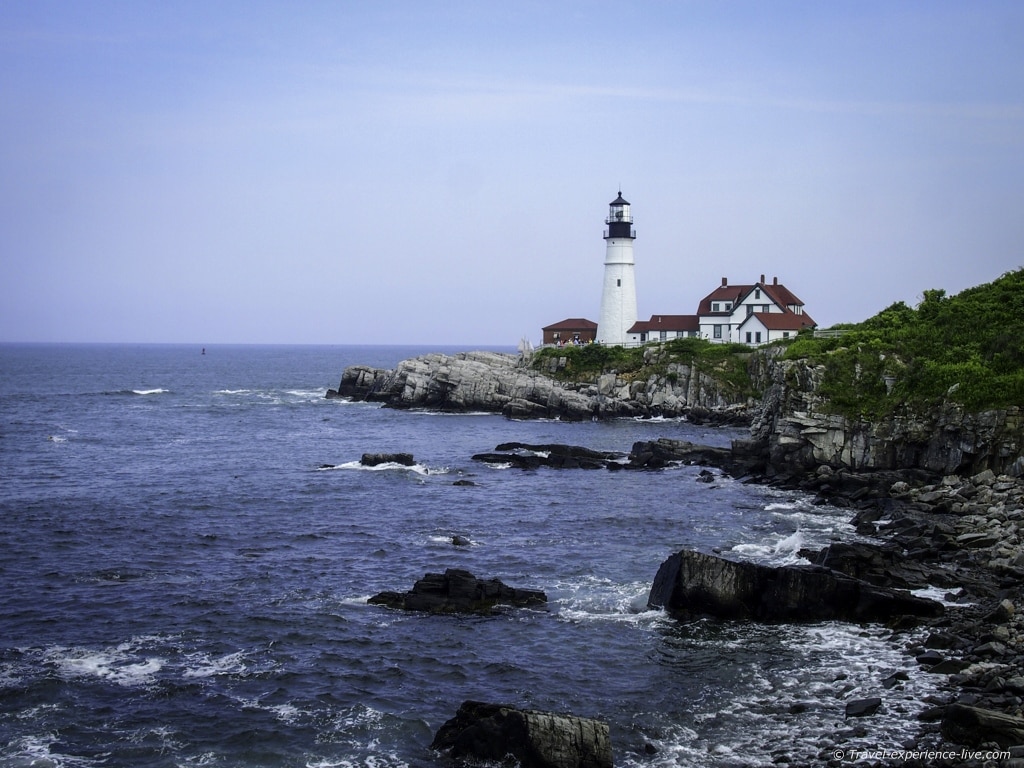8 Best Things to Do in Dry Tortugas National Park on a Day Trip
Its remote location allows most visitors to spend only a few hours in the park, but there are still a lot of fun things to do in Dry Tortugas National Park in that timespan.
Located almost 70 miles west of Key West, the Dry Tortugas are the westernmost part of the Florida Keys. This cluster of seven tiny islands, composed of soft sand and coral reefs, lies in the middle of the mouth of the Gulf of Mexico, roughly halfway between the southern tip of Florida and Cuba.
It’s one of the most difficult U.S. national parks to get to, only accessible by seaplane or boat from Key West, which itself is a multi-hour drive from the Florida mainland.
People who do make the effort to go there, however, are welcomed by blue skies, white sand beaches, crystal-clear waters, abundant birdlife, colorful coral reefs and (usually) delightful weather. And of course, there’s massive Fort Jefferson, the largest brick buildings in the Western Hemisphere.
Dry Tortugas National Park is as close to a tropical island paradise as you can get in the contiguous United States.
Below, you’ll find the best things to do in Dry Tortugas National Park, from guided tours to bird watching to snorkeling.
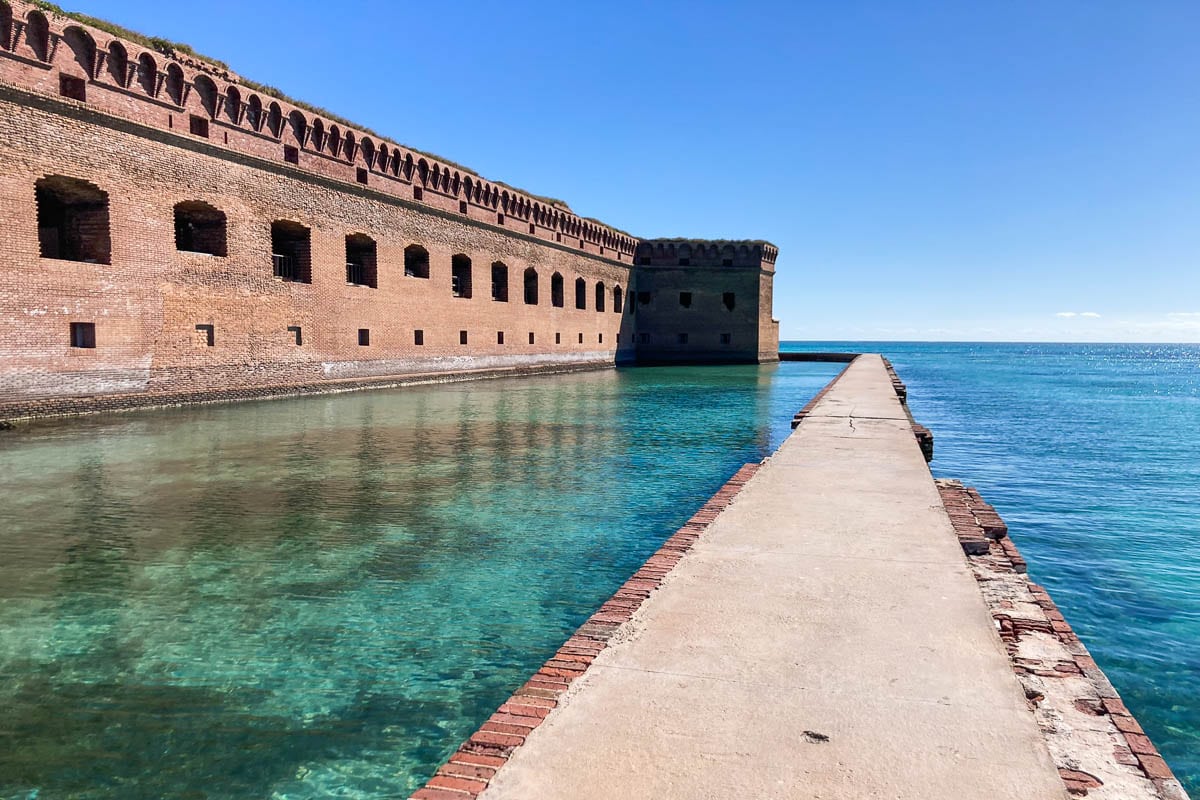
This blog post about the top things to do in Dry Tortugas National Park contains affiliate links. You can read more about our Terms of Use / Disclosure here.
Visiting Dry Tortugas National Park FAQs
Before we get to the must-do Dry Tortugas National Park activities, let’s answer some common questions about the park. This is, after all, a park that’s pretty hard to get to.
For example, the drive from Miami to Key West is about 4 hours, while the morning boat trip to the Dry Tortugas is another 2.5 hours. For your convenience, I strongly recommend spending a night in Key West between those journeys.
Visiting the Dry Tortugas does require some planning in advance and these FAQs should help you prepare for your trip to this unique national park.
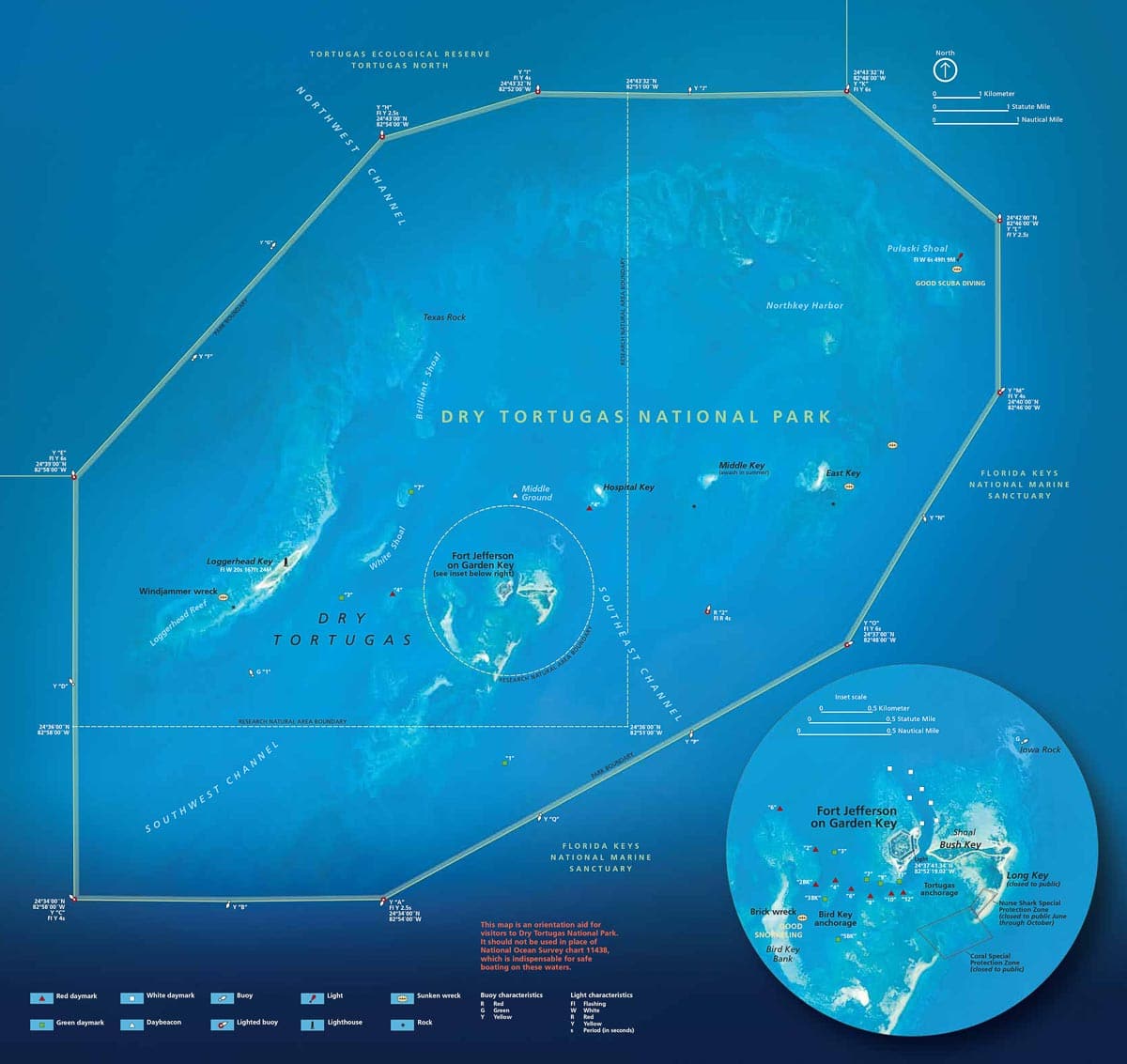
How Do You Get to Dry Tortugas National Park?
Although the park is exceptionally remote, you do have a few options to get to the Dry Tortugas. You can get there either by seaplane or by boat, whether it’s on a catamaran ferry, a boat with a guide, or your own private boat.
Seaplane to Dry Tortugas National Park
There’s only one company that’s authorized to fly visitors to Dry Tortugas National Park: Key West Seaplane Adventures.
This is by far the fastest way to get to the Dry Tortugas, but it probably doesn’t come as a surprise that it’s also quite pricey. Yet, if you can afford it, flying to the Dry Tortugas in a seaplane is an unforgettable experience.
You’ll get to enjoy a unique bird’s-eye view of the park and Fort Jefferson, as well as opportunities to spot sharks, shipwrecks and turtles from above.
Both half-day and full-day seaplane trips from Key West to Dry Tortugas National Park are available.
The half-day trips (just under 4 hours total) depart both in the morning and in the afternoon, while the full-day trips (just under 8 hours total) depart in the morning only.
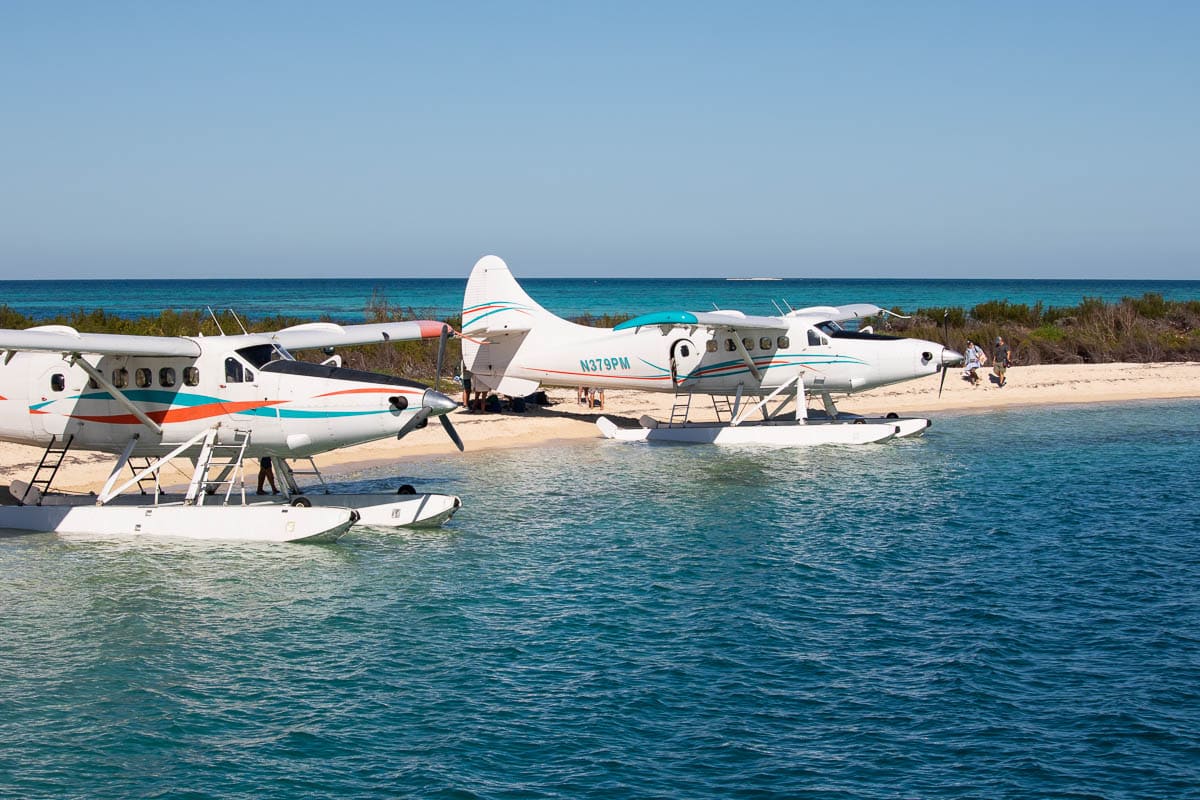
Ferry to Dry Tortugas National Park
Arguably the most popular way to get to the Dry Tortugas is with the high-speed catamaran Yankee Freedom III.
This Dry Tortugas National Park ferry is an authorized concessioner of the National Park Service and travels to the Dry Tortugas from Key West every day. (Weather or other events may very occasionally disrupt service, though.)
The total Yankee Freedom III ferry trip to the Dry Tortugas lasts about 9.5 hours, including approximately 4 hours on Garden Key.
Onboard the ferry, there’s inside and outside seating, bathrooms, freshwater showers to rinse off any sand or seawater, and a food and beverage service, including a bar on the return trip.
A tour guide will offer information throughout the journey and point out any highlights or wildlife sightings along the way.
Additionally, the price of a Yankee Freedom III trip also includes breakfast on the ferry, as well as a complimentary lunch, which you can enjoy onboard, at the picnic area outside Fort Jefferson, or on one of the sandy beaches.
Snorkeling equipment is also available free of charge.
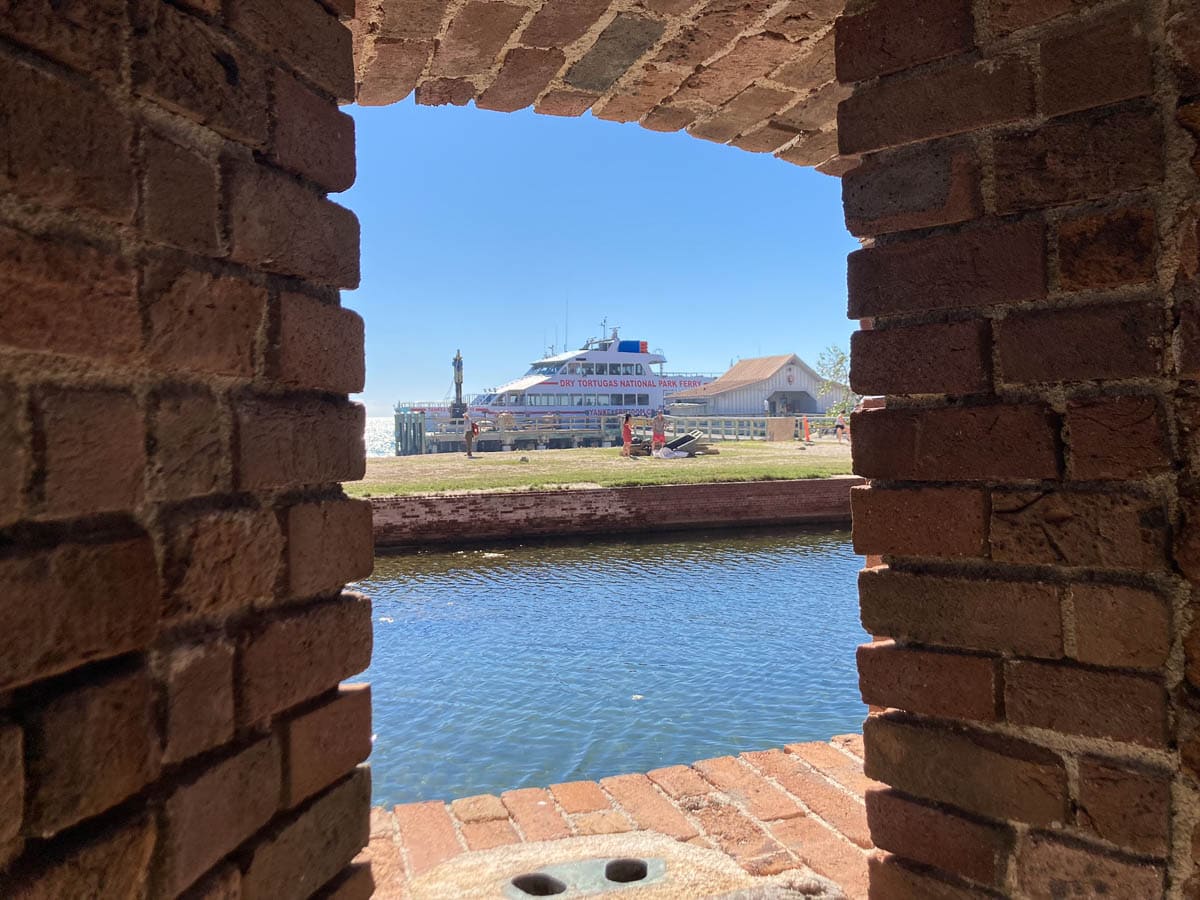
Charter and Guided Tours to Dry Tortugas National Park
In addition to the daily seaplane and ferry trips to the Dry Tortugas, you can also book a guided trip with permitted tour operators.
Several different tour operators are permitted to offer guided trips to Dry Tortugas National Park. You can choose from bird watching excursions and eco tours to guided fishing trips and diving or snorkeling adventures.
See the full list of permitted tour guides here.
Private Boat to Dry Tortugas National Park
The fourth option to get to Dry Tortugas National Park requires you to have your own boat. This won’t apply to the vast majority of readers of this post, so I’ll keep it short.
If you’d like to visit Dry Tortugas National Park with your own boat, you do need a permit before you begin any recreational activity. You need to register on Garden Key before doing anything else. It’s also important to be self-sufficient, since there’s no water, food or fuel in the park.
You can read more about bringing your own boat to the Dry Tortugas here.
How Much Time Do You Need to Experience Dry Tortugas National Park?
Only seven tiny islands dot the 100-square-mile open-water expanse of Dry Tortugas National Park. Only three are open to the public and only one has a boat dock and seaplane beach: Garden Key.
As such, your visit to the Dry Tortugas will most likely be limited to Garden Key, home to Fort Jefferson.
To do all of the recommended activities in Dry Tortugas National Park below, you really only need 3-4 hours on Garden Key. Considering the time it takes to get there and back, however, this would require a full-day trip.
So simply put, you don’t need more than a one-day trip to fully experience what Dry Tortugas National Park is all about.
It is possible to stay for one or more nights, too, though, in case you want to do more snorkeling, bird watching, sunset viewing or sunbathing. More on that below.
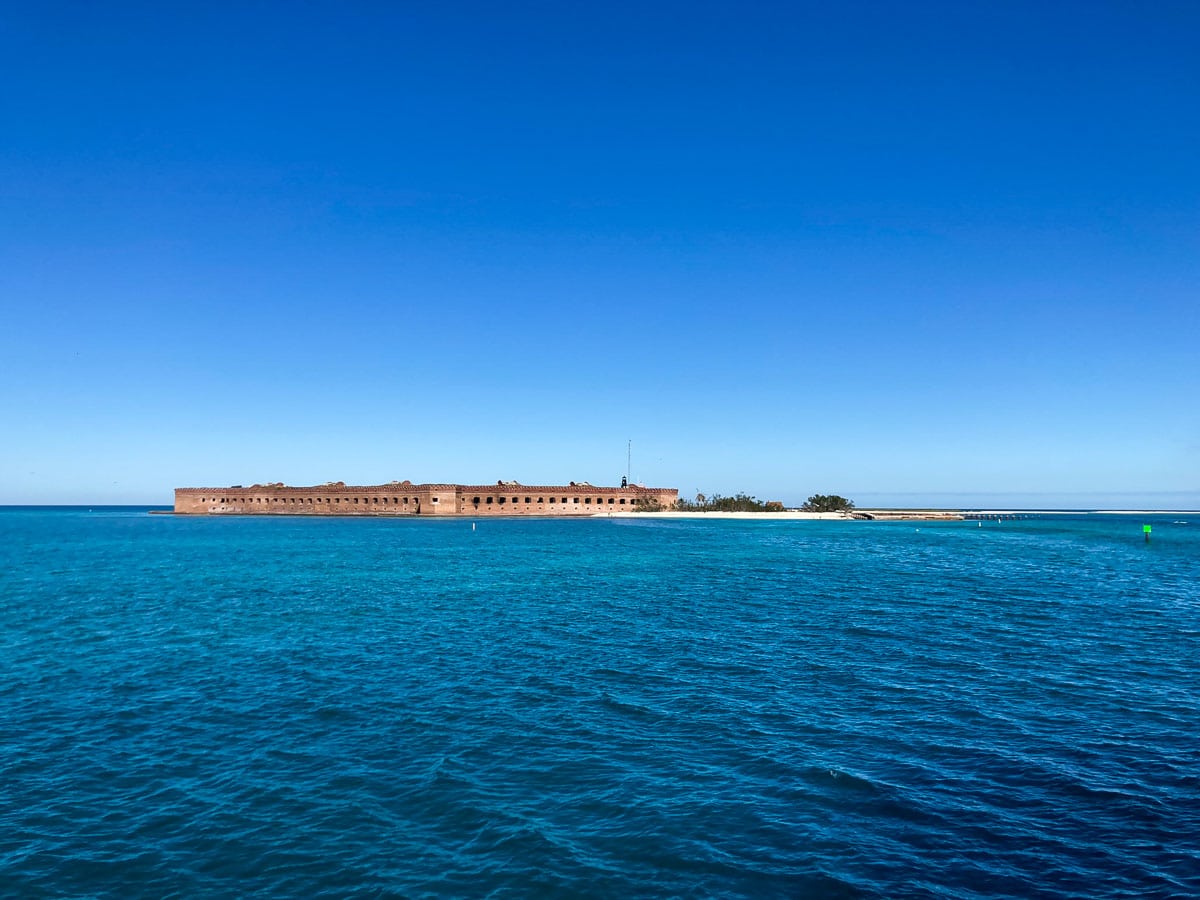
What Is the Best Time to Visit Dry Tortugas National Park?
There are basically two seasons in Dry Tortugas National Park: the summer wet season and the winter dry season.
Each season has its benefits and downsides, depending on what you’re looking for. For example, snorkeling is generally best in summer, which also is hurricane season. The winter months of December, January, and February, on the other hand, allow for some world-class bird watching, but may come with cooler winds and rougher seas.
Summer in Dry Tortugas National Park
In Dry Tortugas National Park, summer starts in May and lasts through October.
This is the time of year that includes the Atlantic hurricane season, which typically runs from June 1 to November 30.
However, when there are no hurricanes—which is most of the time, of course—the weather is “generally idealistic with little or no wind, and excellent visibility for snorkeling and viewing marine life,” the National Park Service says.
That said, hurricanes do sometimes disrupt travel to the Dry Tortugas, and other parts of Florida for that matter. Therefore, the Park Service strongly encourages visitors to keep an eye on the tropical weather forecast before planning a trip out to the Dry Tortugas.
Additionally, if you’re planning on also exploring Bush Key, be aware that the island is closed every year from February to September, which is most of the summer season. This is to protect the enormous colonies of sooty terns and brown noddies that nest and raise their young on the island.
Winter in Dry Tortugas National Park
November through April is the winter season in Dry Tortugas National Park.
This season offers cooler weather and smaller crowds, but does come with occasionally high swells and reduced underwater visibility. The sea can be choppy this time of year with waves up to 5 feet, which could make boat rides a bit rougher.
However, if you’re lucky enough to visit the Dry Tortugas on a calm winter day, the park is absolutely glorious and the snorkeling excellent. Then, life is as good as it gets anywhere in the United States that time of year!
Additionally, early winter—December and January—is a great time for bird watching in Dry Tortugas National Park. Many birds get blown in by strong winds from the north and west, while January marks the arrival of the 80,000 terns and 4,500 noddies that’ll soon be nesting on Bush Key.
Bush Key is open to the public in January and December, allowing visitors to explore its beaches, look for wildlife and walk around the island (if the land bridge to Garden Key is present).
How Much Is the Entrance Fee for Dry Tortugas National Park?
Visiting Dry Tortugas National Park costs $15.00 per person, but visitors younger than 16 can enter for free. Tickets are valid for 7 consecutive days.
If you have a valid Annual Pass or America the Beautiful Pass, you can show it when checking in for your seaplane or ferry ride, after which they will deduct the entrance fee from your transportation price.
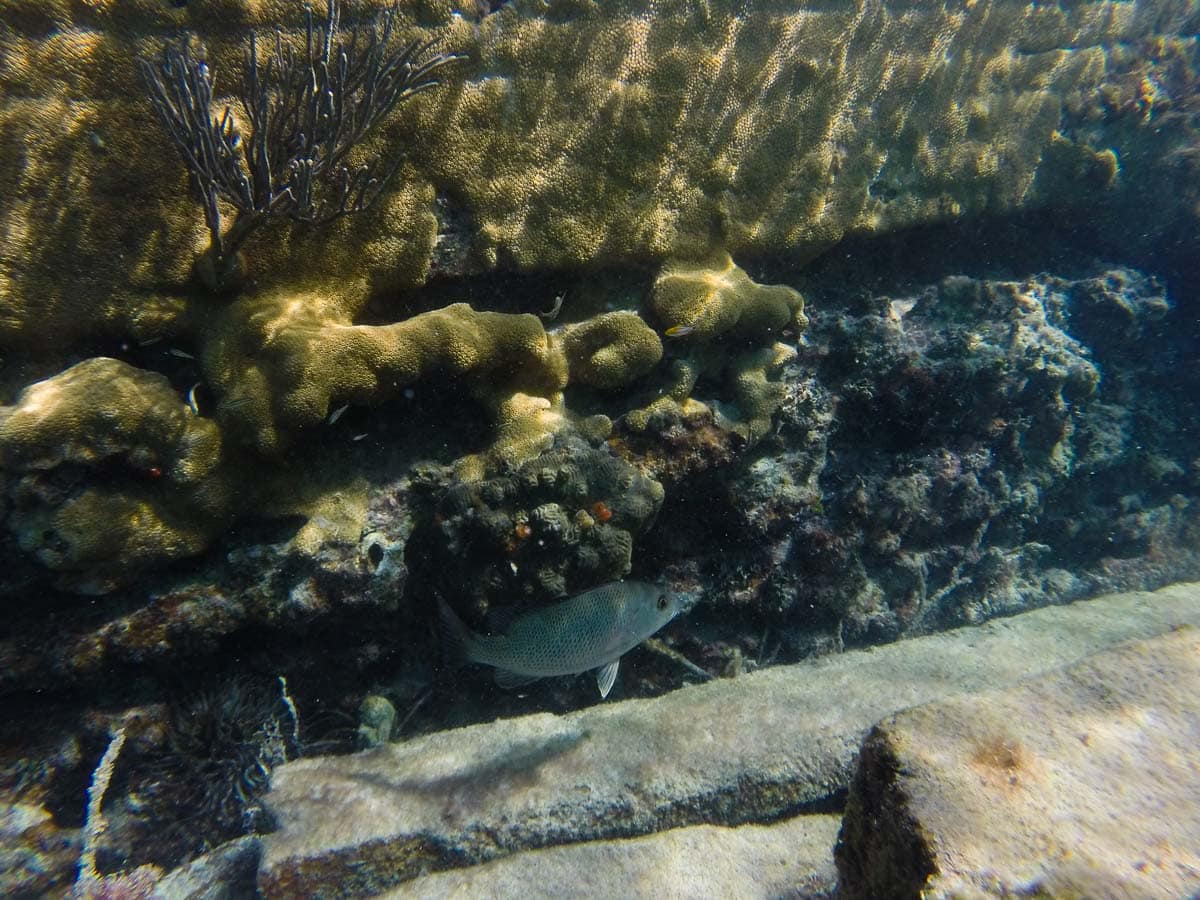
What Should You Bring on a Trip to Dry Tortugas National Park?
There is no food or water available in the park, nor is there a shop selling camping or beach essentials. You must bring everything you need during your trip to the Dry Tortugas.
Here are some of the things I recommend bringing with you:
- Reef-safe sunscreen
- Bathing suit
- Beach towel
- Sunglasses
- Binoculars
- Camera
- GoPro or another type of small underwater camera
- Walking shoes
- Change of clothes (there are changing rooms on Garden Key)
- Snacks and plenty of water (you can buy food and beverages on the Yankee Freedom III)
- National Park Pass, if you have one (you can buy America the Beautiful Passes here)
Can You Spend the Night in Dry Tortugas National Park?
Yes, you can! There is a small, primitive campground on Garden Key, right next to Fort Jefferson.
Because there’s no food or water on the island, it’s essential to plan your Dry Tortugas camping trip properly. You must bring everything you need with you, in other words.
Campers can get to Dry Tortugas National Park via the daily Yankee Freedom III ferry, with a permitted tour guide, or with their own vessel. The seaplanes do not take campers to the Dry Tortugas.
Prepared campers are in for a magical Dry Tortugas National Park experience, involving stunning sunsets, a star-peppered night sky, and even night snorkeling.
You can read more about camping on Garden Key here.
Best Things to Do in Dry Tortugas National Park
Now that you know all this background information about visiting the Dry Tortugas, let’s talk about the most popular things to do in Dry Tortugas National Park.
Even though you’ll probably only visit Garden Key, home to Fort Jefferson, and perhaps adjacent Bush Key, there’s a (surprisingly) wide range of activities to enjoy here.
From historical fort tours and bird watching to beach strolls and snorkeling, the Dry Tortugas are the perfect combination of history, nature, and outdoor recreation.
Join a Guided Tour of Fort Jefferson
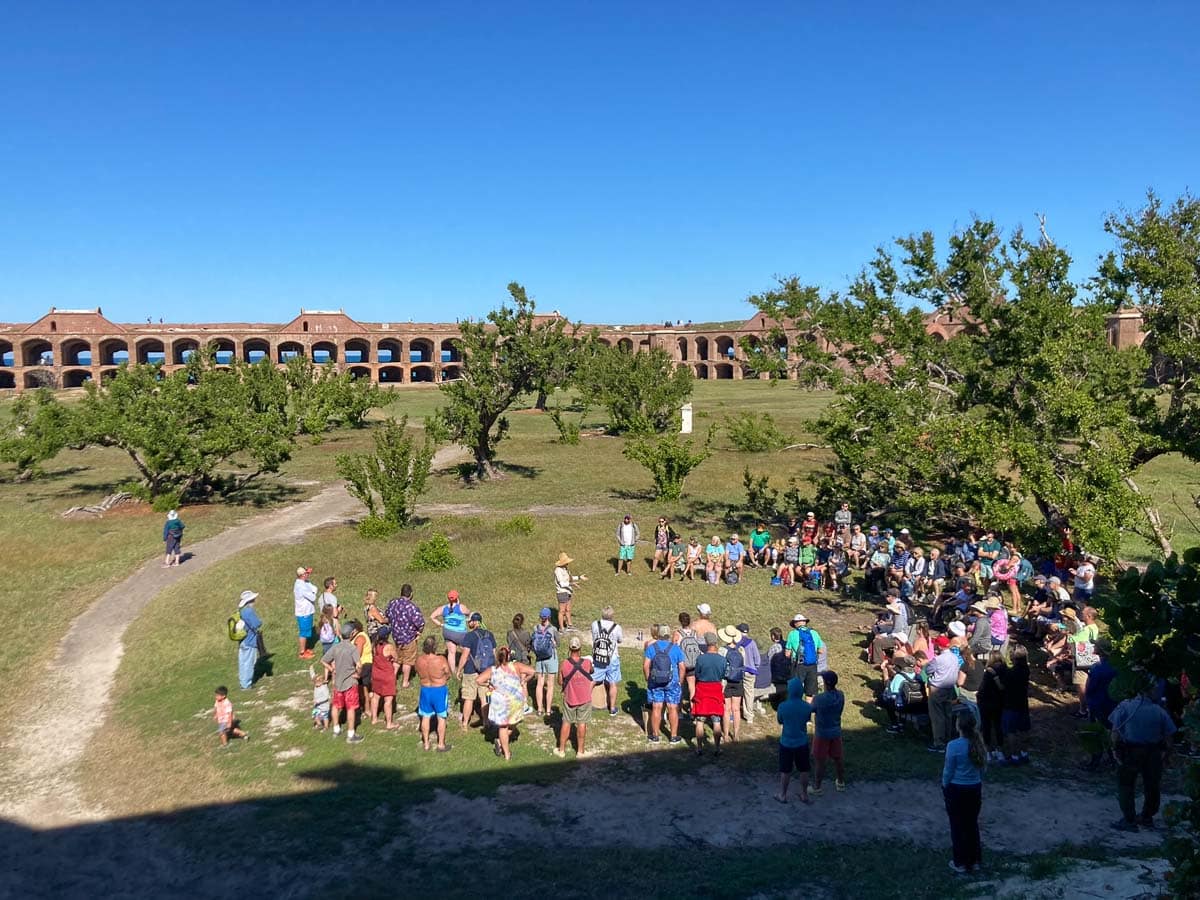

Fort Jefferson dominates the 14-acre island of Garden Key and is the cultural heart of Dry Tortugas National Park. This gigantic island fortress is one of the largest 19th-century forts in the United States and oozes history.
To learn more about the rich and fascinating history of Fort Jefferson, I cannot recommend a guided tour more.
If you’re traveling to the Dry Tortugas on the Yankee Freedom III, the onboard guide will give an introductory talk after disembarking, followed by a longer guided tour of the fort. You can do the entire tour or just watch the introduction and proceed on your own.
Explore Massive Fort Jefferson on Your Own

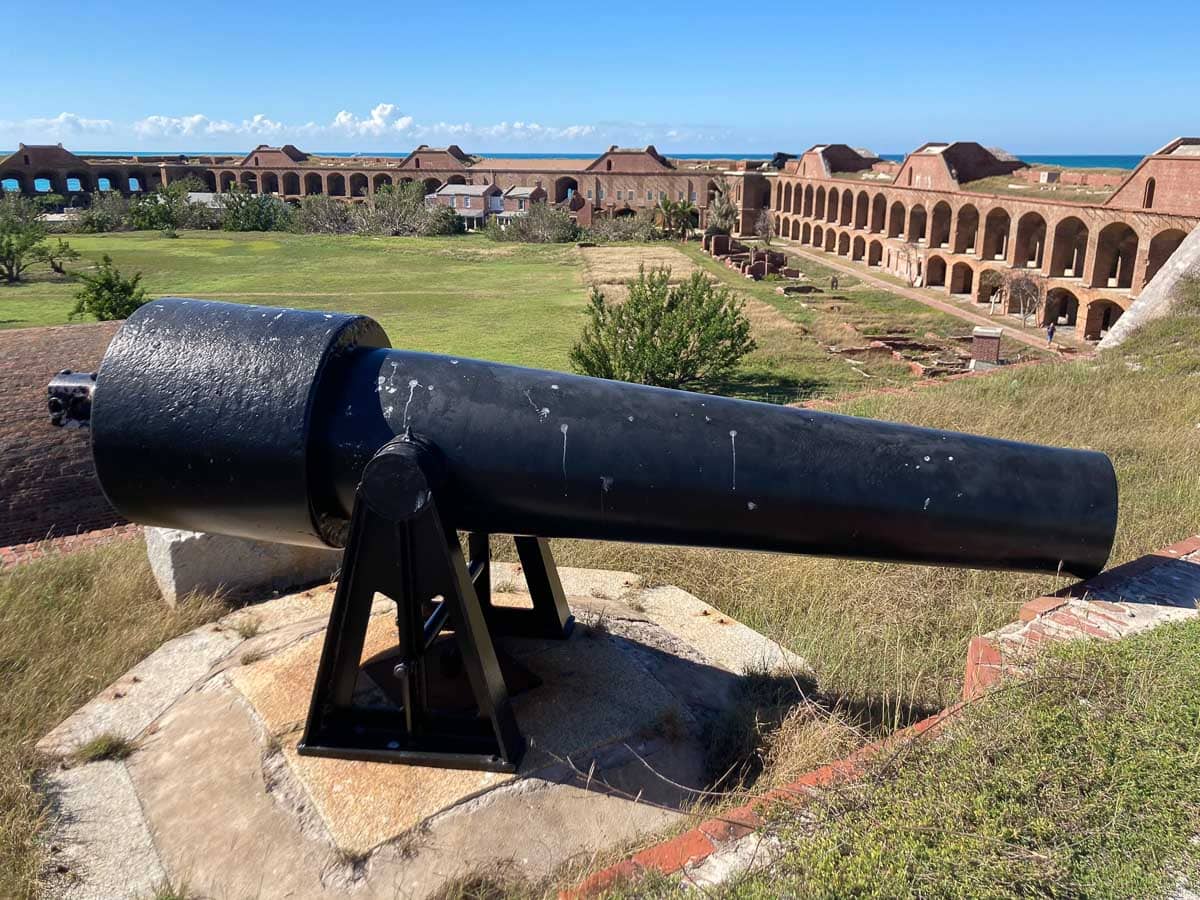
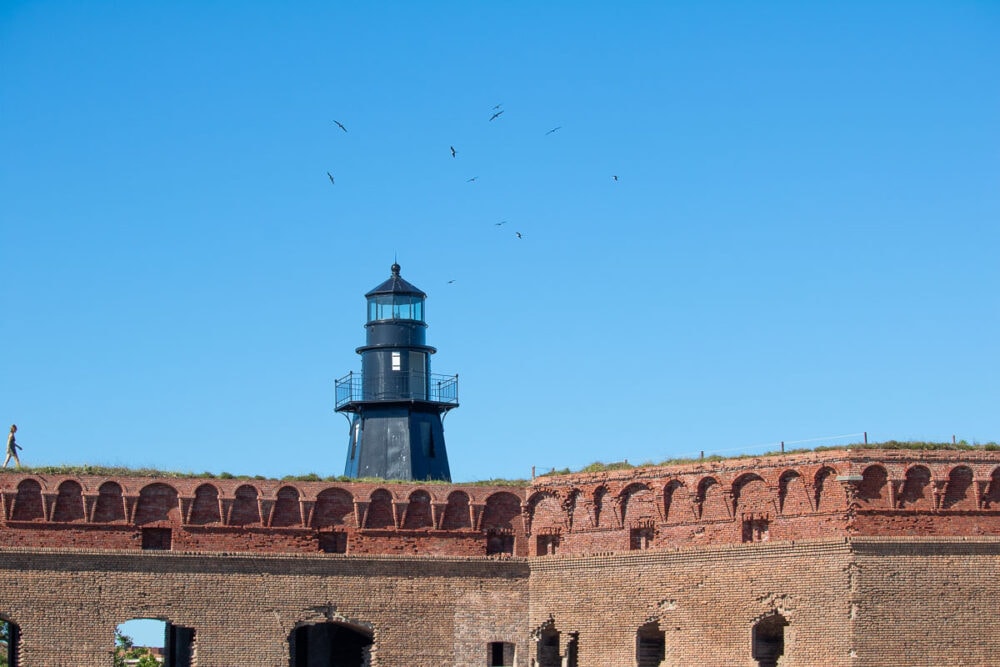
Most of Fort Jefferson is open to the public, except for a small area that houses service buildings and ranger accommodations—yes, park rangers do actually live on tiny Garden Key. You’re free to wander around the fort on your own on a self-guided tour.
Brochures are available in the visitor center, while walking signs point out a route along the fort’s main highlights. Featuring a hexagonal shape, Fort Jefferson consists of three levels, which you can access via a spiral staircase at each corner of the hexagon.
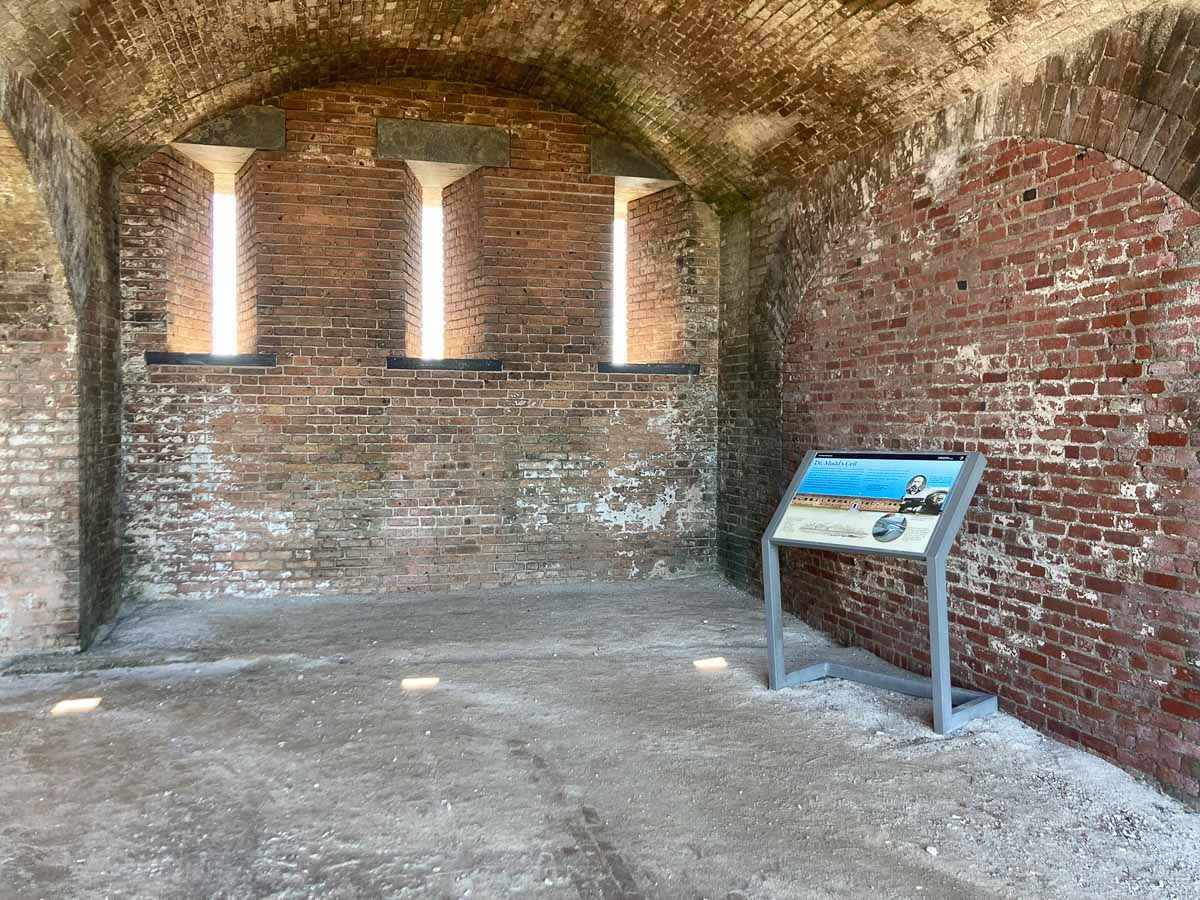
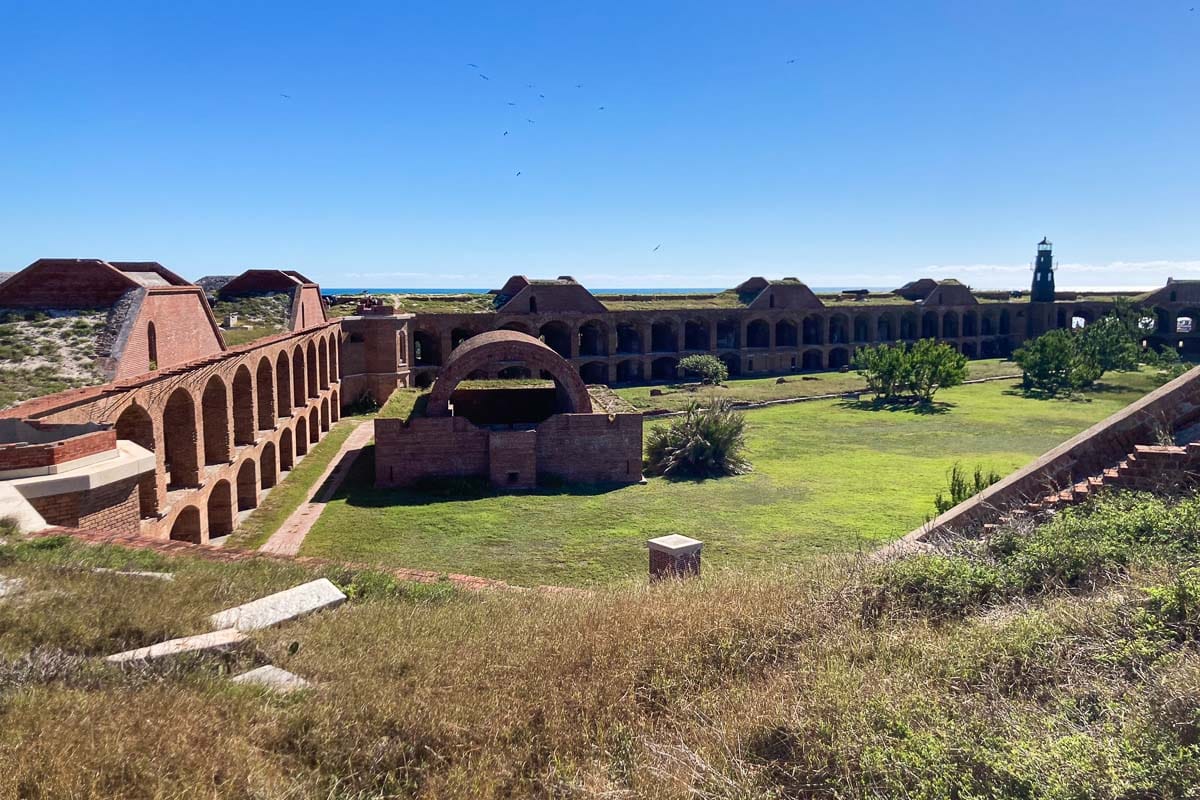
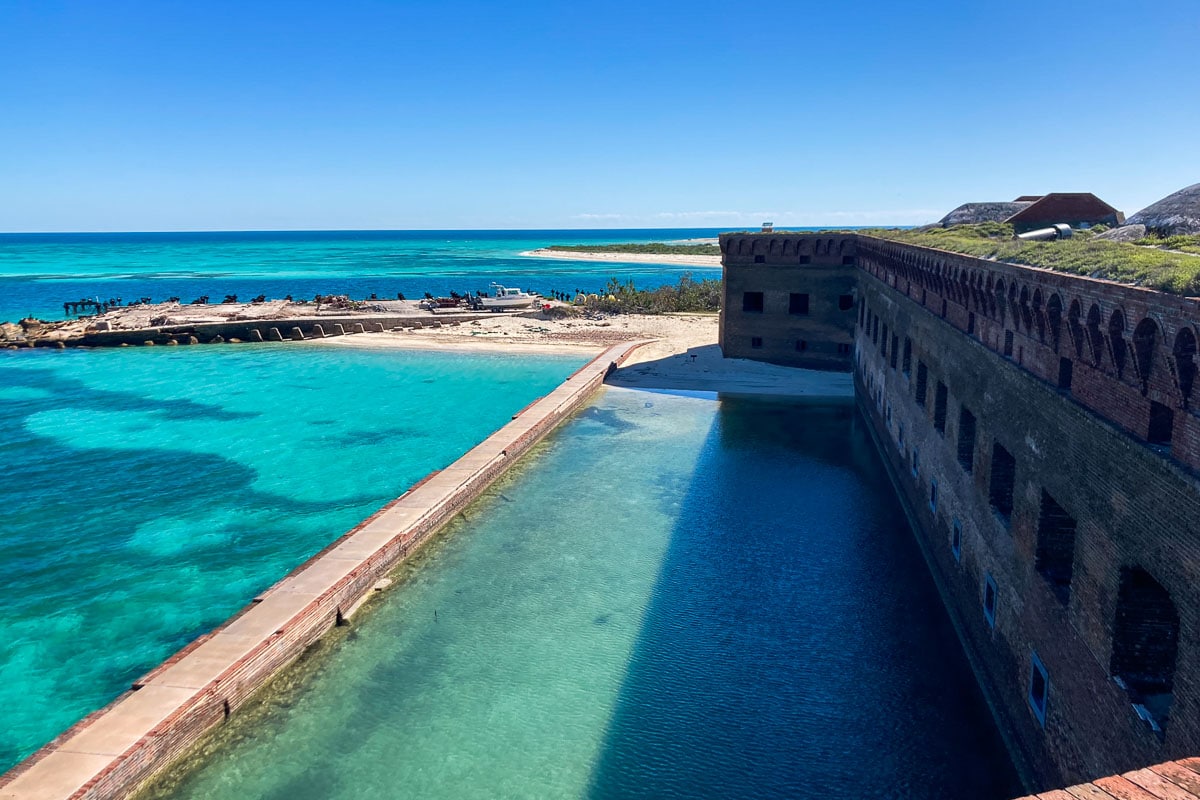
Major highlights include the Tortugas Harbor Lighthouse on one of the bastions, the former cell of Dr. Mudd who was involved in President Lincoln’s assassination, the Soldiers’ Barracks ruins, and the spectacular views from the upper level.
Caution: Avoid walking underneath or alongside the brick walls and arches. Previous storms and hurricanes have damaged the fort, causing loose mortar and bricks to occasionally fall down.
Stroll the Fort Jefferson Moat Wall
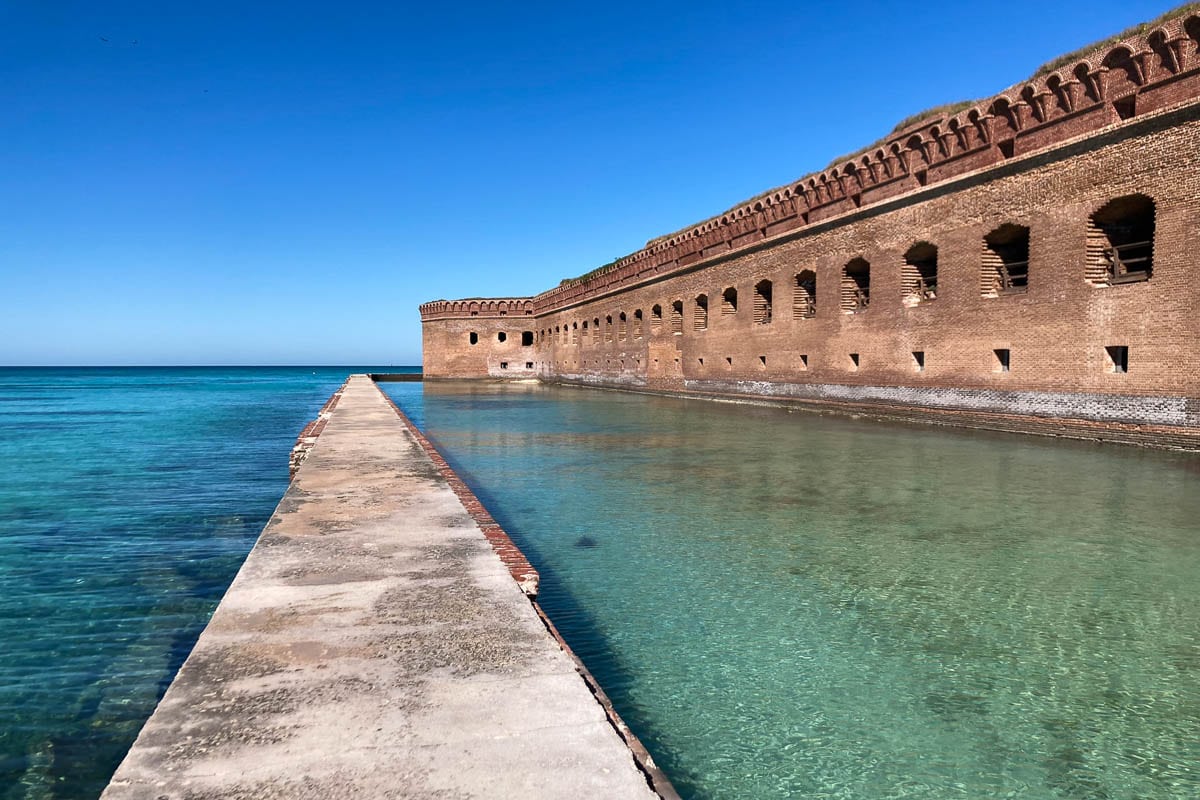
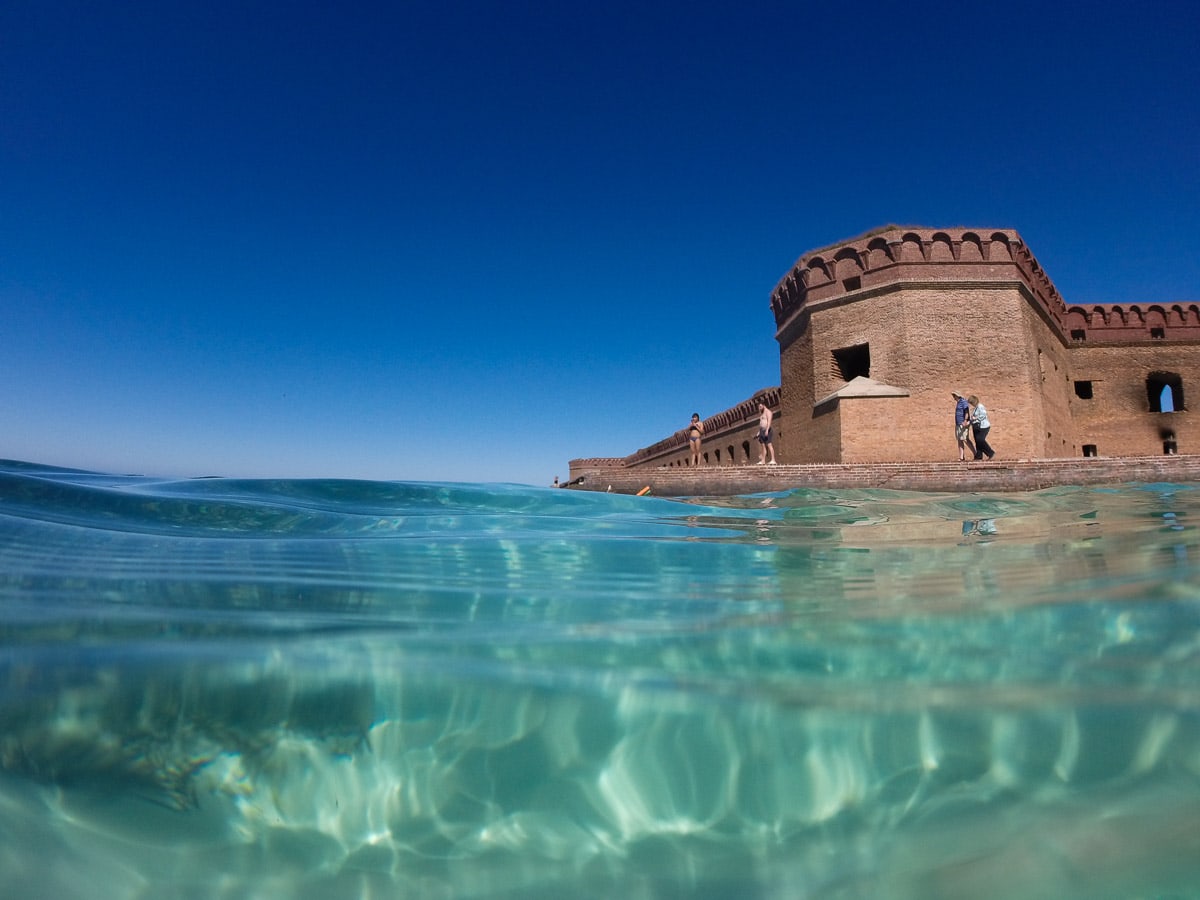
Even despite its location in the middle of the ocean, the decision was made to construct an actual wall and moat around Fort Jefferson. It’s literally a sea fort surrounded by a walled-in moat, dozens of miles from the nearest mainland.
Although the water in the moat is off-limits, you can actually walk on the Moat Wall itself.
This is a really fun way to see massive Fort Jefferson from another perspective, while also being able to admire the shallow turquoise water from up-close.
Additionally, if you don’t feel like getting wet, walking the Moat Wall of Fort Jefferson is the next best thing to do in Dry Tortugas National Park to see marine life. You’ll be right above the crystal-clear water. If you’re lucky, you might see larger fish or even a turtle.
Spend Some Time Bird Watching
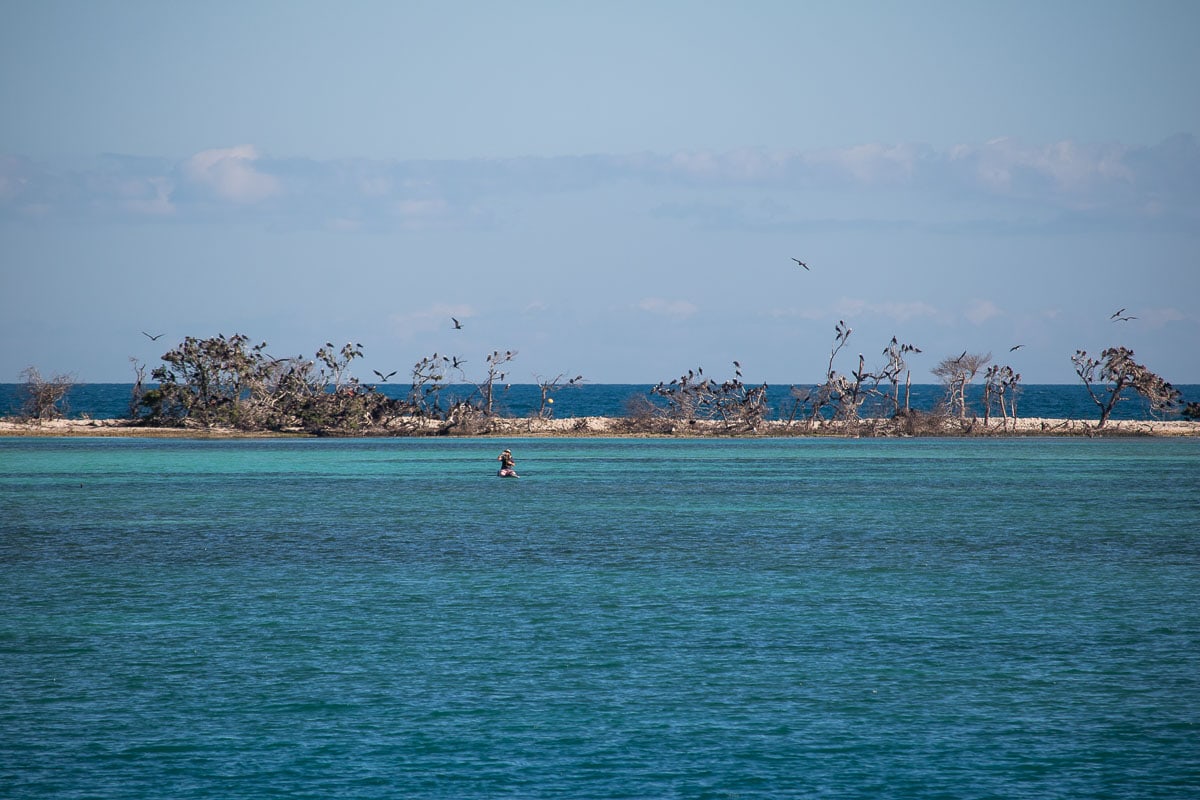
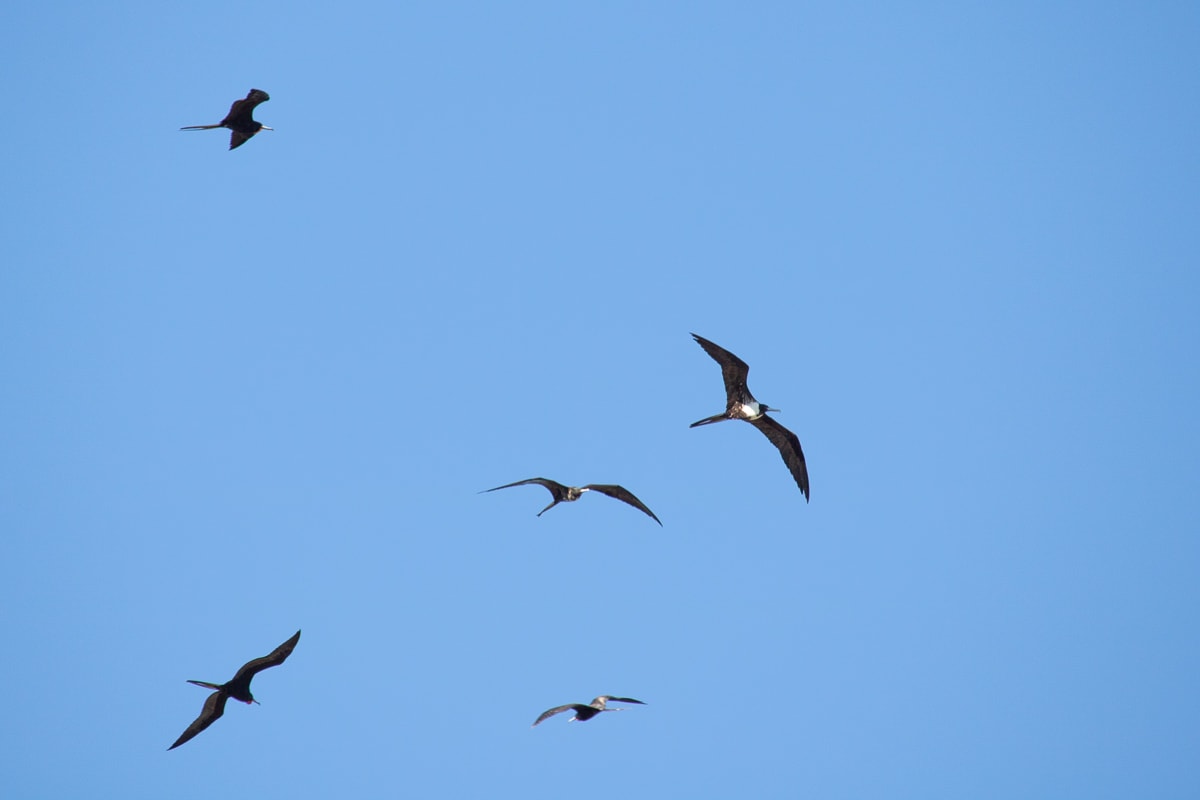
Bird watching is pretty good in the Dry Tortugas year-round, but it truly becomes a world-class spectacle in spring.
During the spring migration, which starts as early as mid-January, these small islands attract tens of thousands of birds. This includes a mindboggling 80,000 sooty terns and several thousand brown noddies. It’s also a wintering destination for numerous gulls and migratory shore birds.
And don’t forget to look up! Often there are a bunch of magnificent frigatebirds soaring high above Fort Jefferson. Dry Tortugas National Park is one of the only places in the United States where you can regularly see these large pelagic birds.
I’ve mentioned only a handful of birds, but almost 300 bird species have been spotted in the Dry Tortugas. Almost all of those are seasonal or migratory birds, though.
Even though this is a rather small national park, it is the seasonal home of a potentially incredible concentration of birds.
An underrated and often-overlooked activity, bird watching is definitely one of the top things to do in Dry Tortugas National Park, whatever time of year you might be visiting. Bring your binoculars!
Walk Around Bush Key
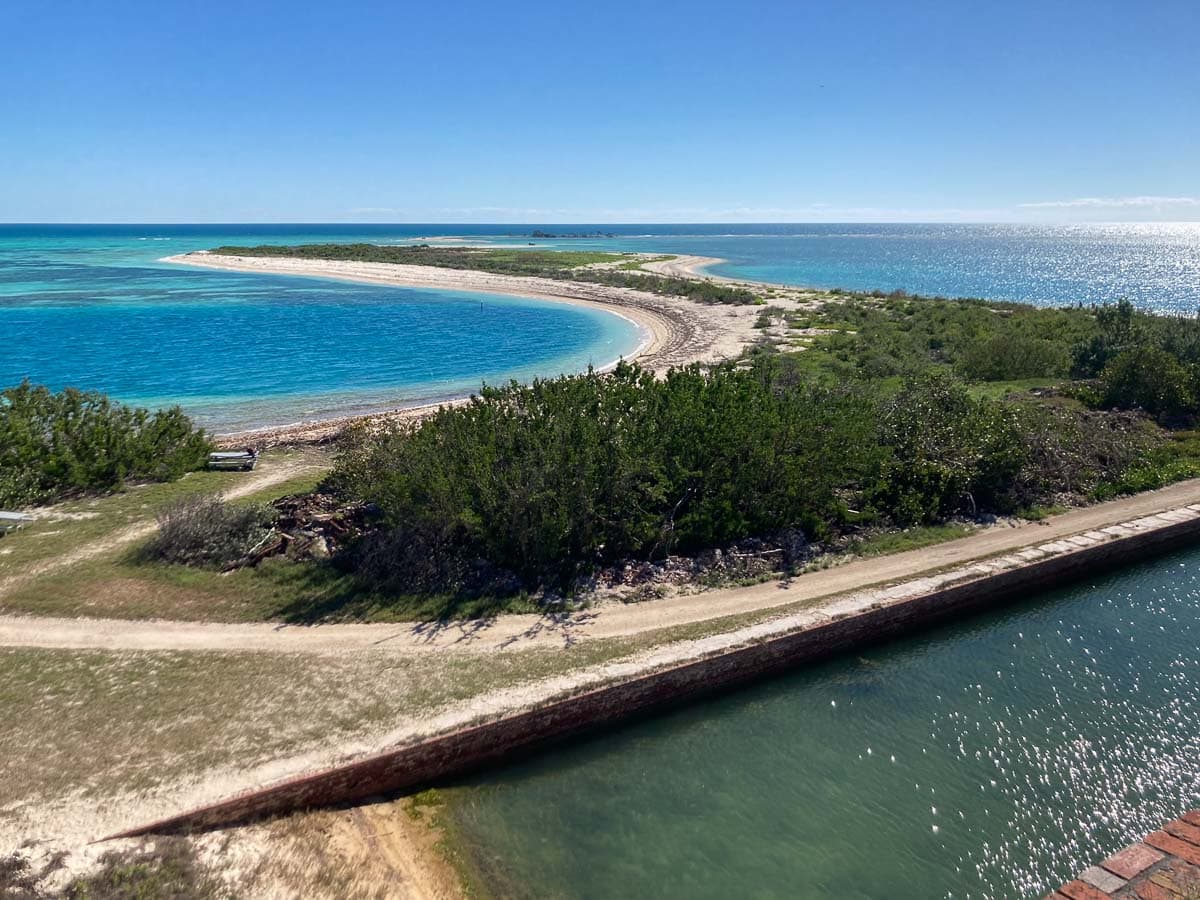
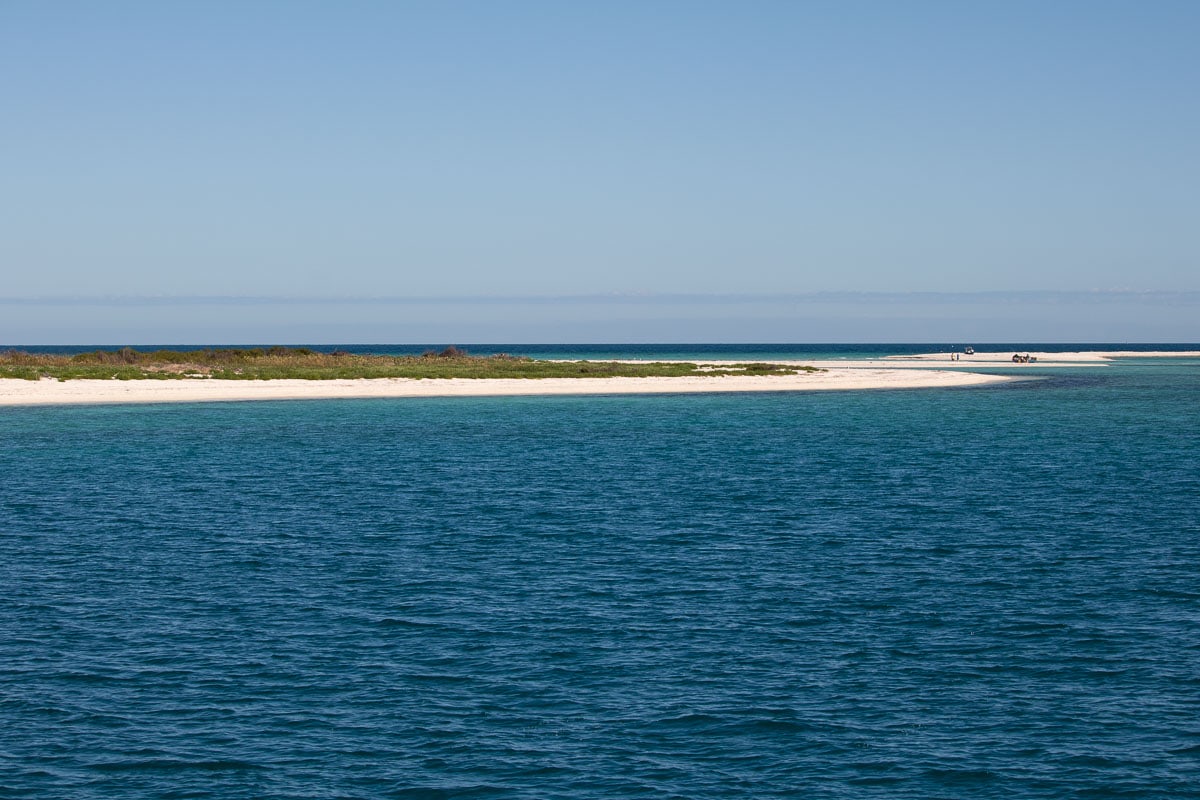
If you happen to visit Dry Tortugas National Park in late-fall or early-winter, you have the amazing opportunity to explore Bush Key.
Only 16 acres in size, this small island adjacent to Garden Key is open to the public outside of the bird nesting season.
When it is open—and the land bridge to Garden Key is intact—you can walk to this uninhabited island on a sandy beach and explore the 1-mile roundtrip shoreline trail from sunrise to sunset.
Note: Bush Key is closed to the public every year from February to September. While you won’t be able to walk around the island then, the exceptional bird watching opportunities from Garden Key definitely make up for that.
Sunbathe on One of the Best Beaches in the Florida Keys
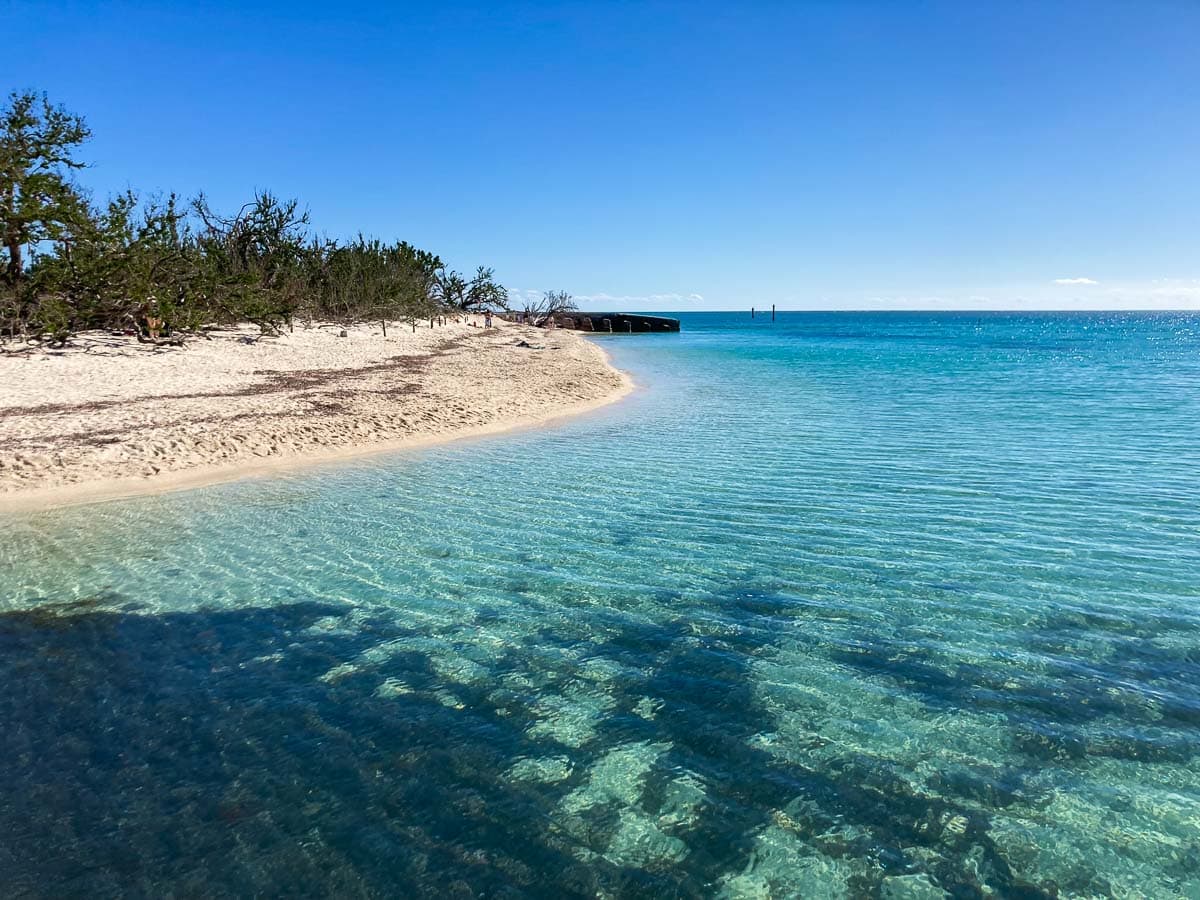
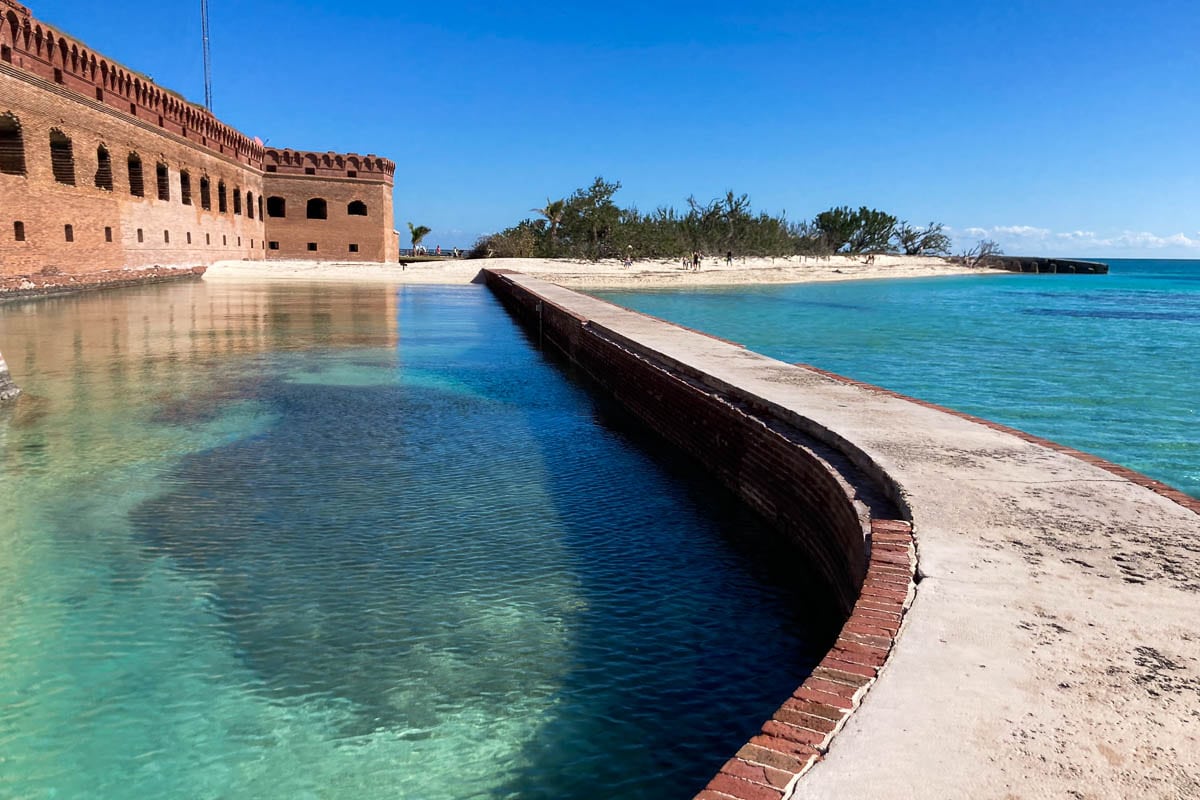
There are plenty of nice beaches in the Florida Keys, but some of the most pristine are in Dry Tortugas National Park.
On a day trip, you can enjoy the white sands at South Swim Beach and North Swim Beach on Garden Key. When open and accessible, Bush Key also has some fine beaches (although swimming or snorkeling is not allowed there).
Both South and North Swim Beach, located at opposite sides of Fort Jefferson, may be rather small, but they’re undeniably beautiful. They’re offer amazing swimming and snorkeling opportunities, which I’ll talk about below.
If you aren’t sure which beach to go to, I recommend South Swim Beach. It has great views of Fort Jefferson, you can walk the Moat Wall from there, the water is sensational, and snorkeling is excellent.
Swim in Turquoise Water
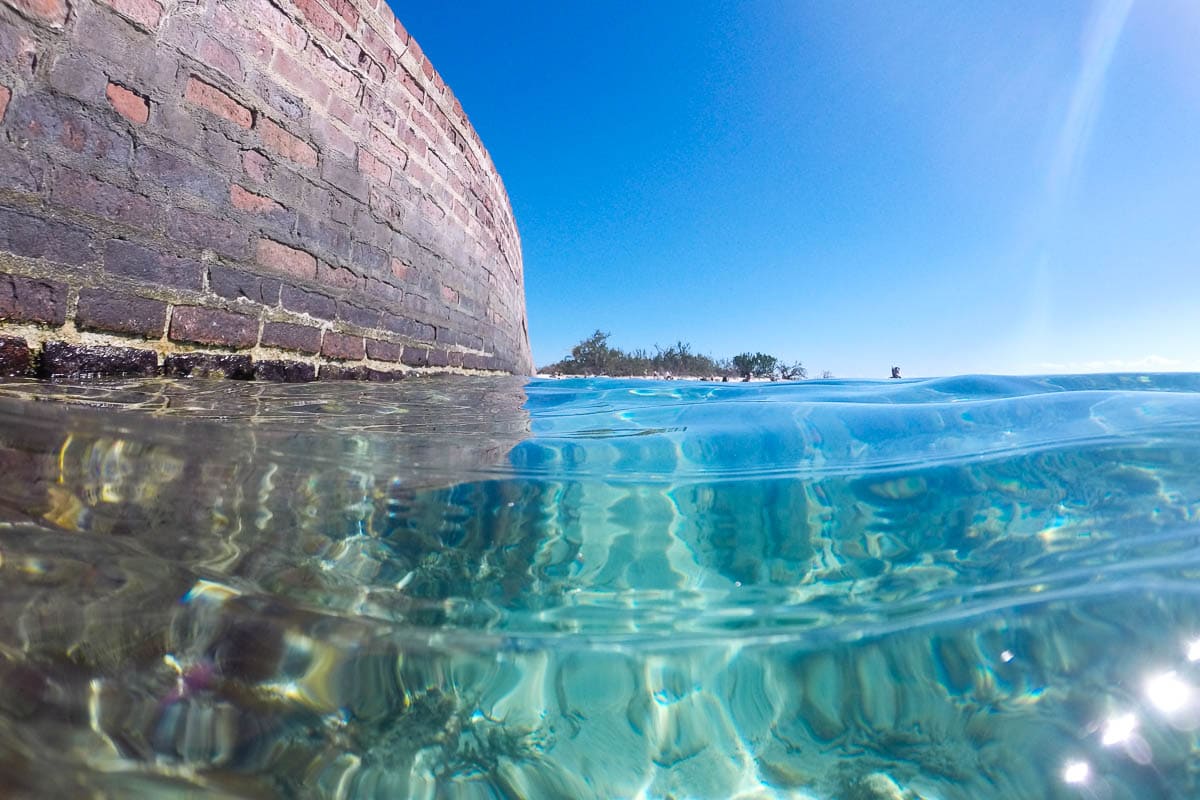
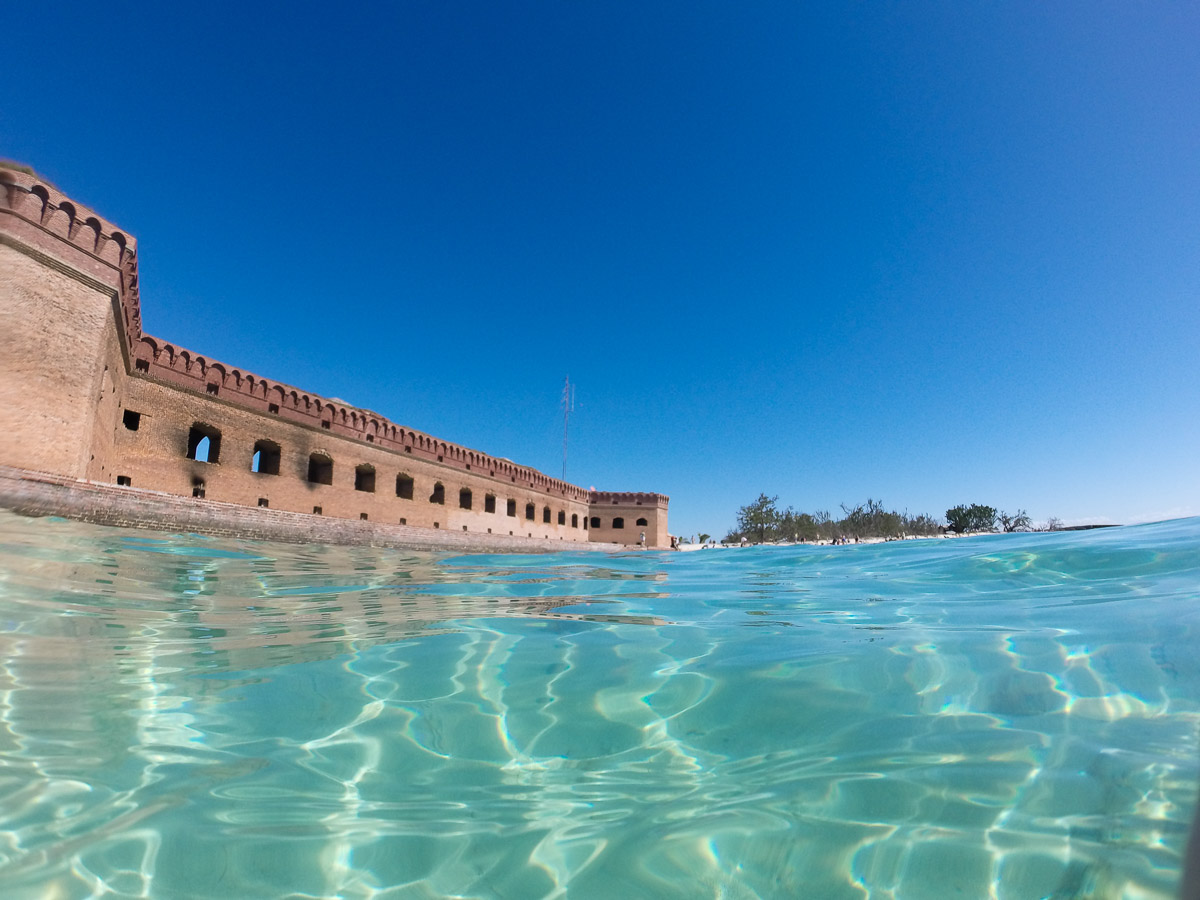
If you’re not renting snorkeling equipment or haven’t brought your own, you can still enjoy the picturesque turquoise waters at Garden Key by going for a swim.
As their name suggests, South Swim Beach and North Swim Beach are the places to do that. Both beaches are just a quick walk from the seaplane beach, boating dock and Fort Jefferson entrance.
Go Snorkeling in the Dry Tortugas
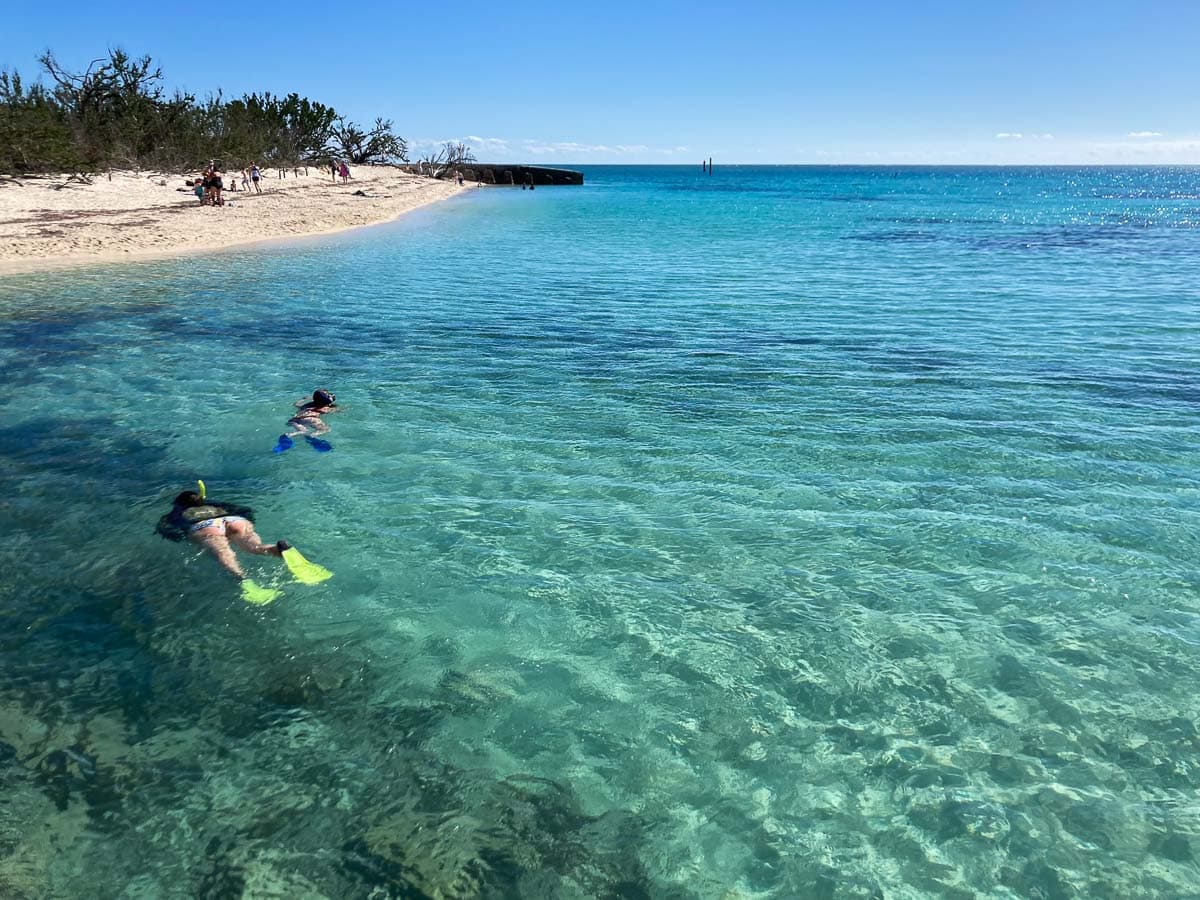

Of all things to do in Dry Tortugas National Park, snorkeling is easily one of the best. Besides a tour of Fort Jefferson, snorkeling is one of the top two experiences in this extraordinary park.
The Dry Tortugas sit at the southwestern end of the massive Florida Keys reef system, which is the third largest reef system on Earth.
“Due to the remote location, and easterly flowing gulf current just south of the park, you are sure to discover a much greater abundance of marine life and often much larger versions than anywhere else in the Florida Keys,” according to the National Park Service.
Simply put, Dry Tortugas National Park offers snorkeling that’s nothing less than word-class. Literally hundreds of species of marine animals live just below the water’s surface. I highly recommend bringing a small waterproof camera, such as a GoPro, to take great underwater photos!
Among the sprawling coral formations and seagrass beds, you might see squid, octopus, lobsters, sea stars, numerous tropical reef fishes, goliath groupers, sharks and sea turtles.
Snorkeling at Dry Tortugas National Park’s Garden Key starts just off of South Swim Beach and North Swim Beach.
There are essentially four main snorkeling areas on Garden Key: the Moat Wall, the South and North Coaling Dock Ruins, and the coral heads just west of Fort Jefferson (which are just outside the left edge of the map below).
Map of Garden Key Snorkeling Areas

Moat Wall
It may seem redundant, but the Moat around Fort Jefferson actually did serve a purpose. A wall was constructed around the fort to protect it from both the occasionally rough seas and any potential amphibious assaults. The result was a moat between the fort and the wall.
Nowadays, you can snorkel all the way along the Moat Wall, from South Swim Beach to North Swim Beach or vice versa.
This is a great area for inexperienced snorkelers, featuring shallow and calm water, cultural artifacts like anchors and cement barrels, and marine life such as reef squid, starfish, hogfish and nurse sharks.
Note: Remember that swimming inside the Moat is prohibited!
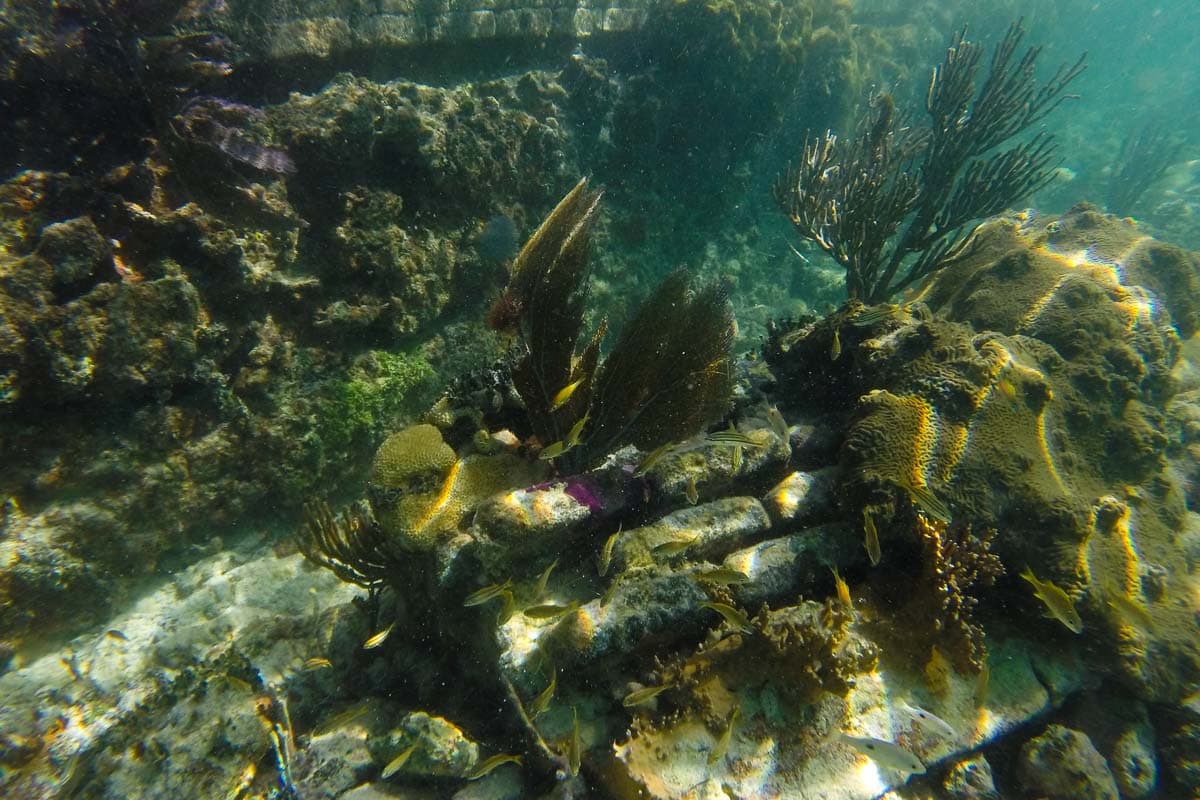
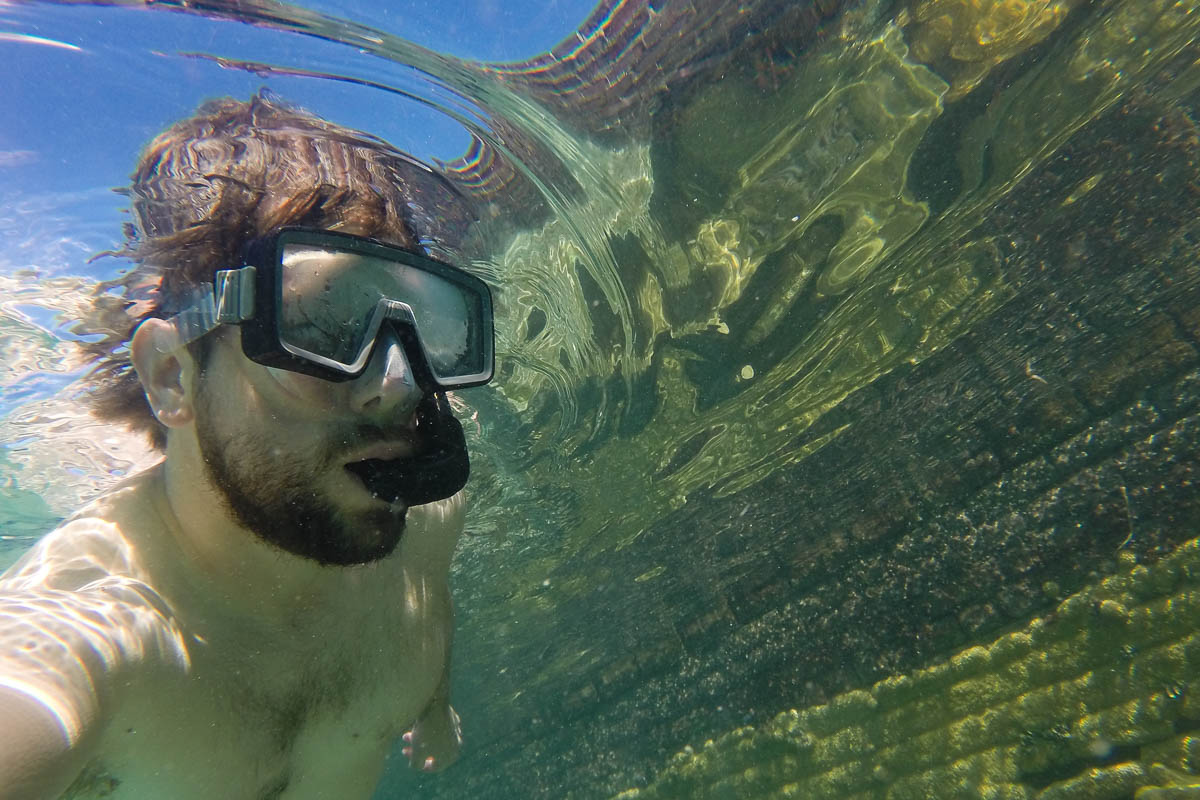
South and North Coaling Dock Ruins
Located near respectively South and North Swim Beach, the South and North Coaling Dock Ruins offer some of the best snorkeling in the Dry Tortugas.
Built by the U.S. Navy in the late-1800s to refuel their ships, these historic coaling pier pilings were destroyed by a strong hurricane. They were never rebuilt and now, snorkelers have the amazing opportunity to see several larger marine animals here.
Along with the deeper water in the dredged channel, the remaining pilings provide shelter to big fish, such as groupers, barracudas, tarpons and, sometimes, sharks. You can also see lots of coral and smaller fish here.
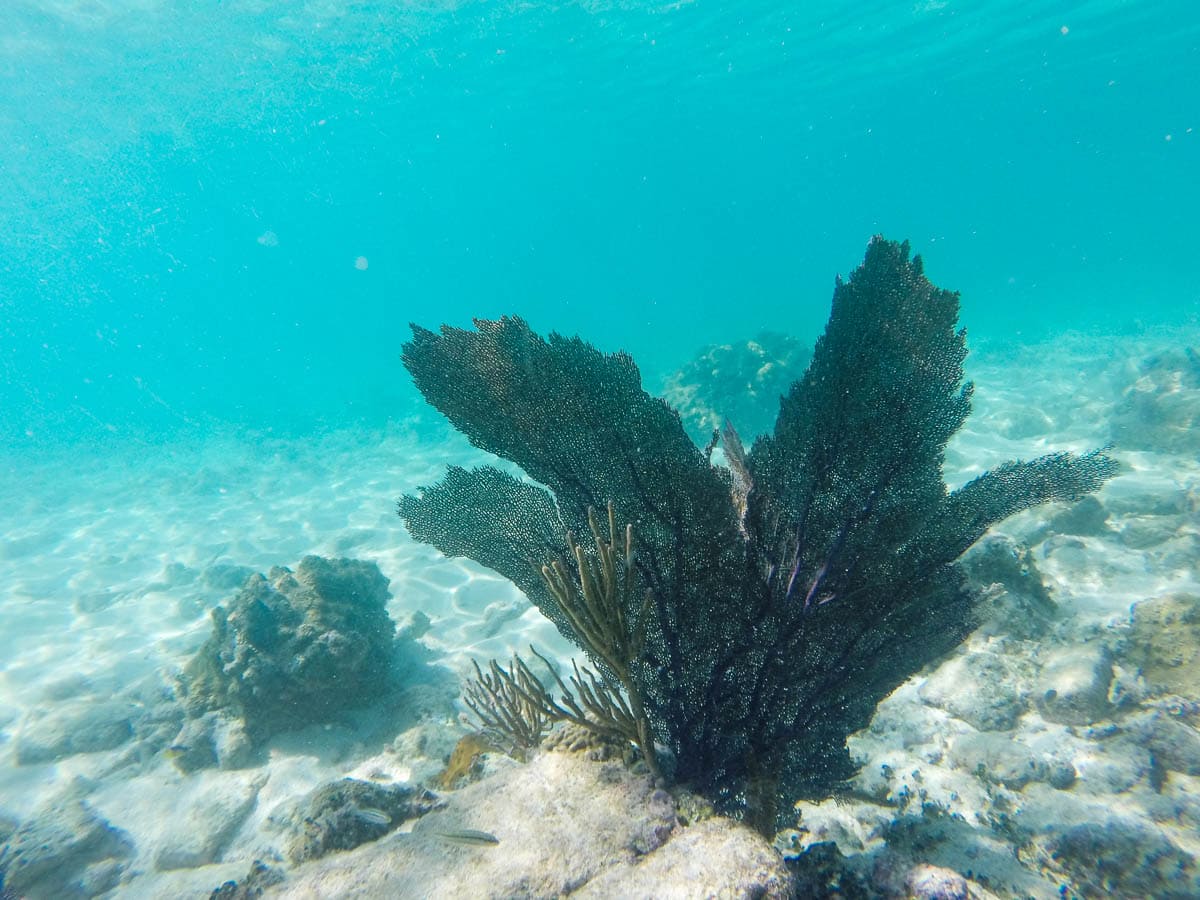
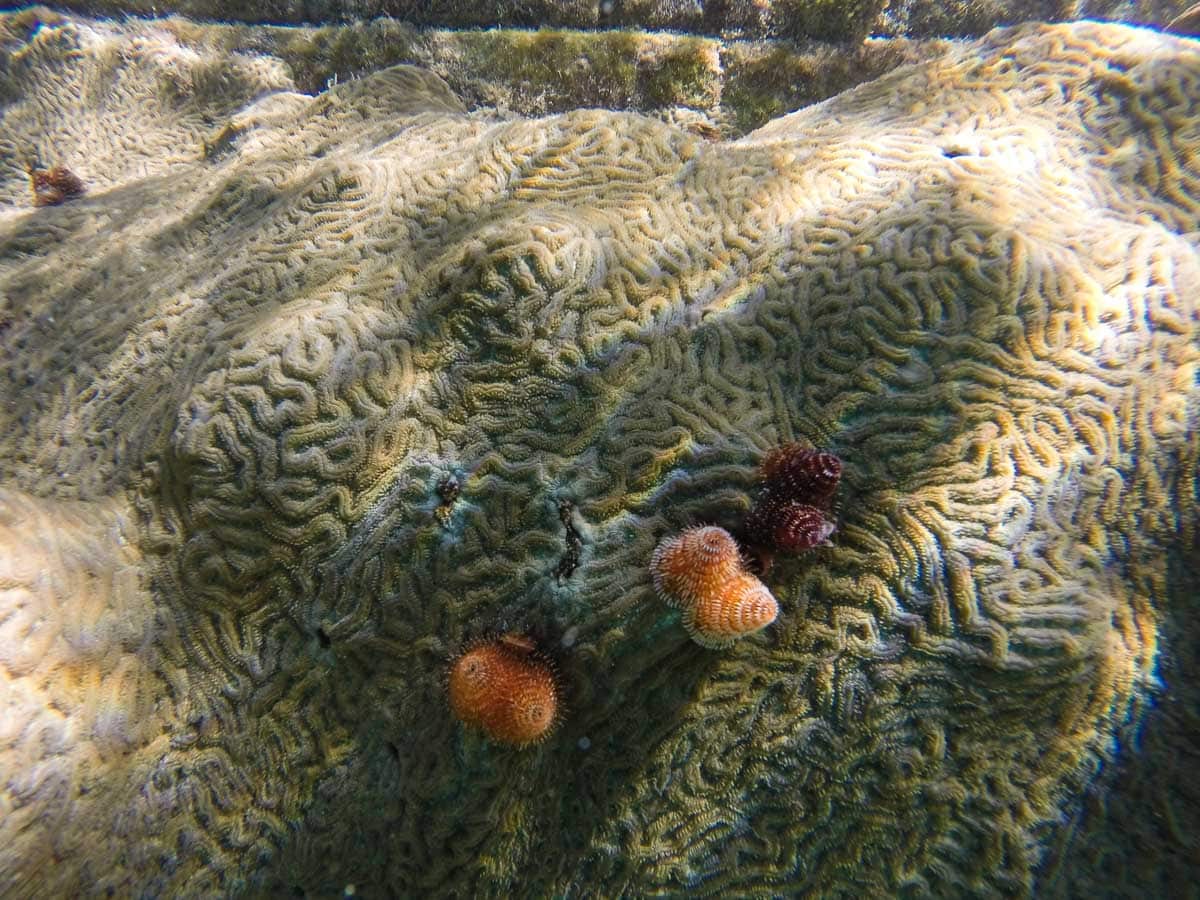
Coral heads west of Fort Jefferson
About 50 feet west of Fort Jefferson—a 100-feet swim from South Swim Beach—lies a collection of coral heads. The coral is near the buoys that mark the outer perimeter of the snorkel area.
While the water is a bit deeper, there’s so much sea life there, including some rather large fish species, that it’s worth the swim.
Note: It’s okay if you’re not comfortable swimming further away from the beach, though. There’s plenty to see closer to the Moat Wall and Coaling Dock Ruins!
Additional Dry Tortugas National Park FAQs
I answered the most important questions related to visiting Dry Tortugas National Park above, but here’s a bit more information about the park.
Where Does the Name Dry Tortugas Come From?
In the early-1500s, Spanish explorers were the first Europeans to visit this collection of small islands in the Gulf of Mexico. It was the explorer Ponce de León who first named the islands in 1513. He called them ‘Las Tortugas’ after the many turtles (tortugas in Spanish) he saw there.
Later on, the name was changed to ‘Dry Tortugas’ to indicate that there was no freshwater to be found anywhere on the islands.
Is There Cell Phone Service in the Dry Tortugas?
Nope, there is no cell phone service whatsoever in Dry Tortugas National Park. It’s the perfect place for a temporary digital detox on the beach or in the water!
In case of emergency, the park rangers do have satellite communication available.
Are Pets Allowed in Dry Tortugas National Park?
Yes, pets are allowed on Garden Key, but are not permitted within Fort Jefferson. All pets must always be on a leash.
The caveat, however, is that neither the Yankee Freedom III, nor the seaplane operators, allow visitors to bring pets onboard their respective ferry or plane. The only way to visit the Dry Tortugas with a pet is with your own boat.
Is Dry Tortugas National Park Always Open?
Yes, Dry Tortugas National Park is open 24/7, but note that several islands are closed to the public.
The only place that’s always open to visitors is Garden Key, except in case of seriously bad weather or other (unexpected) circumstances. Fort Jefferson is open every day of the year from sunrise to sunset.
More About Dry Tortugas National Park
Have You Ever Been to Florida’s Dry Tortugas? What Were Your Favorite Things to Do in Dry Tortugas National Park? Share Your National Parks Experience Below!
More About the National Parks in Florida
- National Parks Near Miami
- Top Things to Do in Biscayne National Park
- Best Places to See Wildlife in Everglades National Park
- Famous Birds of the Everglades (and Where to See Them)
- Where to See Alligators and Crocodiles in the Everglades
- Best Places to Visit on the Everglades Main Park Road
- Top 3 Best Bike Trails in Everglades National Park
- Best Things to See and Do in Flamingo, Everglades






